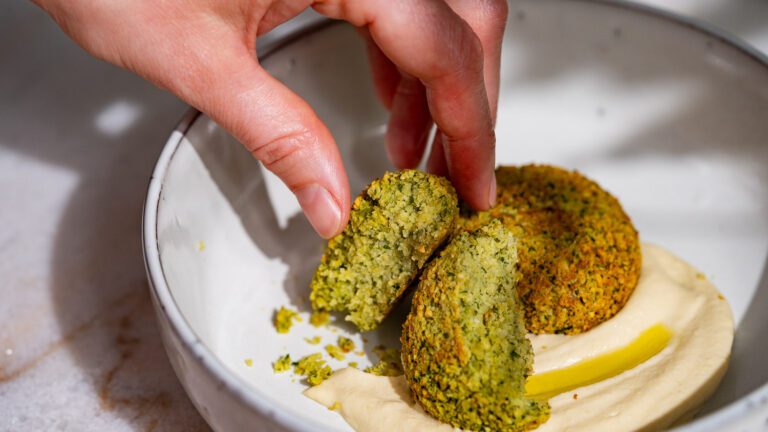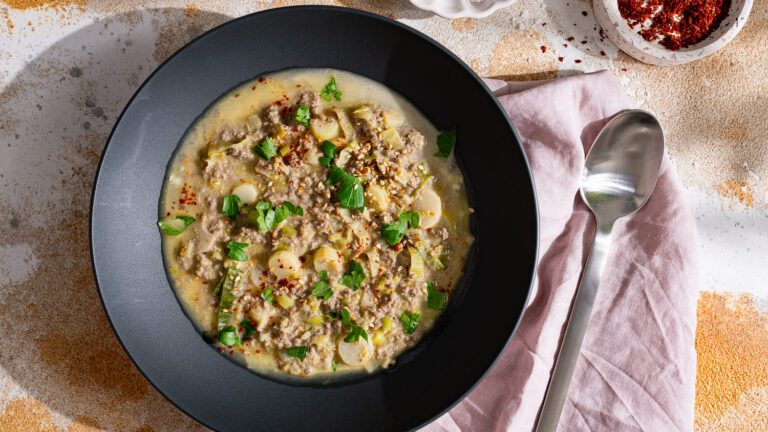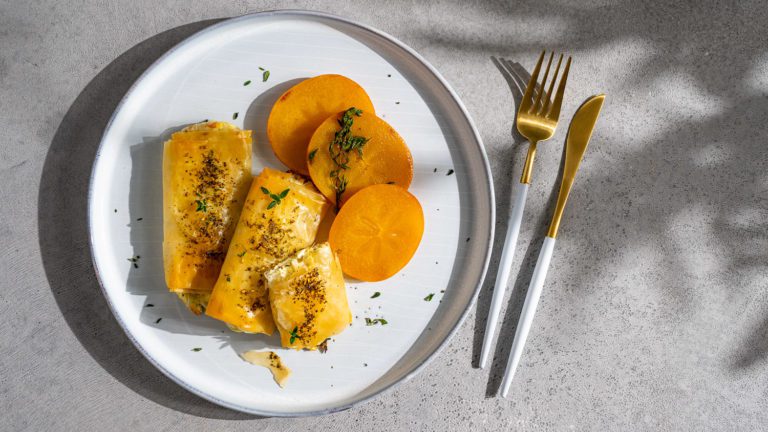Olive tapenade – the best recipe for the Mediterranean classic
I love olives in every color and shape. And when I tried olive tapenade for the first time, I was hooked. This olive paste is an absolute classic of Mediterranean cuisine. The recipe is really super easy and quick to make. Here you can find out everything you need to know to make the popular Mediterranean spread from olives at home.
The most important facts at a glance: What is olive tapenade?
- Olive tapenade is a paste or spread made from high-quality olives, capers, anchovy fillets and other ingredients that is easy to prepare in just a few minutes.
- There are many ways to use olive tapenade – as a spread, in salads, as an ingredient in vinaigrettes or as a side dish for barbecues. And it can also be made vegan by omitting the anchovies.
- Olives vary in color and taste depending on the stage of ripeness and origin; I particularly recommend the Kalamata olive variety for olive tapenade.
Preparation of the olive tapenade

A really simple recipe: preparing olive tapenade is really super easy and very quick. You’ll be finished in a few minutes.
These are the ingredients you need for an authentic tapenade:
- Olives
- Capers
- Anchovy fillets
- Olive oil
- Garlic cloves
- parsley
- Thyme
- lemon juice

The olives should of course be pitted, otherwise it will be very crunchy and not particularly tasty – haha!

Incidentally, I opted for a mixture of kalamata and green olives. This gives you a slightly more differentiated taste and I think it also looks a bit nicer.

Here are the steps you should prepare to make a delicious olive tapenade:
- Stone the olives if necessary.
- Strain the capers.
- Wash the parsley and thyme and pluck from the stalk.
- Peel the garlic.
- Squeeze the lemon.
When all the ingredients are ready, you can mix everything together in a blender or with a hand blender.

Don’t mix the ingredients too much, we don’t want to make a puree, but a slightly chunky consistency. You can achieve this by using short pulse movements of your blender or hand blender.
So don’t blend in one go, but always briefly, then test the texture and blend again briefly if necessary. This gives you more control over the desired consistency.

In total, you won’t need more than 10 minutes to prepare the olive tapenade.
Vegan alternative to olive tapenade
Traditional olive tapenade always contains anchovies and is therefore not vegan. But don’t worry, there is also a vegan version called ‘affinade‘.
To prepare the vegan version of the olive tapenade, simply leave out the anchovies and season with a little more olive oil, herbs and salt if necessary.
The best way to serve, use and eat olive tapenade
Olive tapenade is more than just a paste for dipping or spreading on crusty baguette or olive bread. The possibilities are endless! Olive tapenade on toast or small crackers, for example, is a perfect appetizer. It is also ideal for parties or cozy evenings with friends, as it is easy to prepare and simply delicious.
But olive tapenade can do so much more! Here are a few more ideas on how you can use and enjoy this delicacy:
- As a topping on a simple salad
- As a base or ingredient for a strong vinaigrette
- As part of a crust for baked fish
- The perfect companion for barbecues
You will certainly be able to complete this list very well.
Interesting facts about olives
Olives are the main ingredient in olive tapenade and of course their variety and quality are decisive for the taste.
Olives differ in color, taste and ripeness. Unripe olives are green and are characterized by firm flesh and an intense, pungent aroma, while ripe olives become darker and develop a mild, full-bodied taste. The discoloration of the olives from green to dark shades such as red, purple or black is part of the natural ripening process and does not depend on the variety.
It is important to know that some green olives are artificially colored with ferrous gluconate to give the appearance of ripeness, but this makes their taste more similar to that of firm green olives. I’m not a fan of colored olives, as they always disappoint me in terms of taste.
In contrast, real black olives from Nyons, for example, are also known as tanche olives, as they are only harvested after the first hoarfrost when they are overripe and therefore develop a very intense flavor due to a long ripening period on the trees.
Kalamata olives
One of my favorite varieties are Kalamata olives, also known as Kalamon olives. They are dark purple, almond-shaped olives that come from the Peloponnese peninsula in Greece. When fully ripe, Kalamata olives have a firm and very aromatic flesh. In my opinion, its aromatic and firm properties make it an ideal olive for preparing olive tapenade.
So my recommendation is quite clear: use Kalamata olives for your tapenade, spread it on a crusty piece of baguette and treat yourself to fresh tomatoes, for example!
Tips for storage and shelf life
If you don’t want to serve and eat your homemade olive paste straight away, I recommend storing it in a tightly sealed jar in the fridge after preparation.
I simply wash jars of pickled vegetables very well and then fill them with olive tapenade or other dips and creams, such as hummus, baba ghanoush or labneh. You don’t always have to buy the expensive freshness boxes.
The finished tapenade can be kept in the fridge for about a week, or even up to two weeks under optimal conditions. To extend the shelf life of the olive tapenade in the fridge, you can cover the surface with a thin film of olive oil.
You should stop eating the tapenade if you notice any changes, such as:
- an unusual consistency
- a strange smell
- Color changes or streaks
- a cloudy liquid
That’s it!
I really love olives, so I can only warmly recommend olive tapenade to you. Olive paste is more than just a delicious spread that is quick and easy to prepare. You can use, vary and refine them to your heart’s content. Whether as an aperitif or as a side dish with main courses, it will definitely not disappoint. But really pay attention to the quality of the ingredients, especially the olives – this is crucial for the taste. It is therefore worth using high-quality olives.
So, making tapenade from olives yourself is super easy and also very quick. Have fun trying them out and, of course, enjoy them. If you have any questions, suggestions or general feedback, please feel free to leave me a comment.
Recipe for olive tapenade

Equipment
- Foodprozessor
Ingredients
- 100 g Kalamata Oliven
- 100 g grüne Oliven
- 1/2 Knoblauchzehe
- 5 g Petersilie
- 5 g Thymian
- 2 Esslöffel Olivenöl
- 1 Sardellenfilet
- 1 Esslöffel Kapern
- 1 Teelöffel Kapernsaft
- Salz und Pfeffer
Zubereitung
- Oliven in einem Sieb abtropfen lassen.
- Knoblauch schälen.
- Petersilie und Thymian waschen und von den Stängeln zupfen.
- Oliven mit Knoblauch, Kräutern, Olivenöl, Sardellenfilet, Kapern und Kapernsaft in einen Foodprozessor geben und zu einer groben Paste hacken.
- Oliventapenade mit Salz und Pfeffer abschmecken und mit Baguette oder anderem Gebäck servieren.







